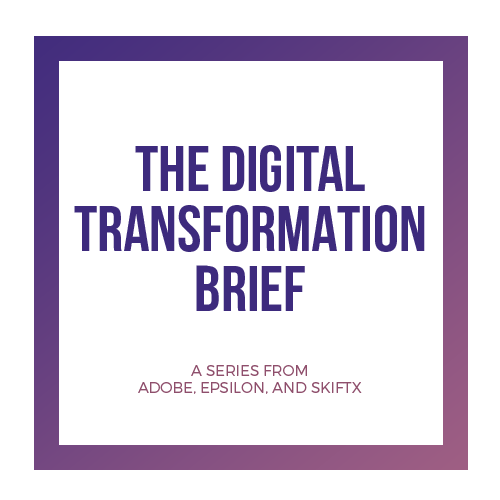The Link Between Travel Booking and Personalized Messaging

Skift Take
This sponsored content was created in collaboration with a Skift partner.
This post comes from Carolyn Corda, Vice President, Industry Strategy--Travel/Hospitality at Epsilon and is part of The Digital Transformation Brief, a series from Adobe, Epsilon, and SkiftX examining the digital trends defining the future of travel. For more digital insights, visit the mini-site here:
Go To Site
The feedback from travelers is unequivocal. When we deliver relevant, coordinated, and personalized messages, they engage with our brands and purchase more.
In particular, they respond positively to one of the bigger challenges we take on—getting them to purchase a new offering online. A recent report from Mindtree found that 78 percent of respondents reported making an online travel purchase based on a highly relevant and personalized promotion. This is only slightly below the percentage of making a repeat purchase (80 percent) and significantly higher than making a purchase based on peer recommendations at 69 percent.
While there’s been substantial investment in developing digital channels and media presence over the past years, there’s a recognition that there’s still a long journey ahead to incorporate personalization into the mix.
So, the challenge ahead of us isn’t about recognizing the opportunity—we’re over that hurdle. What marketing executives are faced with now is making the right investments in customer insight, technology, strategy and organizational design to capitalize on consumers’ desire for personalization as they shift to a multi-device and increasingly mobile environment.
The Opportunity in Personalization
The associated opportunities are almost overwhelming. Every day we read about pilot tests with beacons to deliver offers based on consumer proximity, AI-enhanced robot concierges and dynamic pricing that is increasingly tuned to guest preference and demand. With limited funds, you have to make hard choices on where to place your bets. We strive to avoid the risk of making too many small investments and losing the benefit of a more focused approach, while keeping an eye on potentially less obvious opportunities that could be positively disruptive.
How to Succeed
While it’s certainly challenging to drive personalization in the digital environment, it’s a vital in order to keep up with travelers’ demands for mobility, control and relevance. Consider these three tips to advance your efforts:
- Avoid the temptation to go all-in on one initiative. For example, you may decide to put a lot of investment in app technology and pull-back on funding for organizational support or for data and insight. The result is a great app that underperforms due to the lack of internal leadership and consumer insight. The companies that are succeeding are keeping their investments in balance.
- Aim for a seamless and engaging customer experience. Traditionally, as new channels emerge in travel—website, social, apps—new departments or teams form to lead those channels. Each group often operates with competing missions and success measures, resulting in a confusing customer experience. Leading companies are going beyond simply paying lip-service to customer-centricity and doing the hard work of fundamentally rebuilding their organizations with the customer at the core of those decisions.
- Recruit analytical technology to help. Tools and techniques to convert the growing pool of consumer data into actionable insight in real-time are improving all the time. Encourage disciplined testing and you’ll discover new variables that are predictive of in-market interest, preferences and bookings. You can create a genuine competitive-edge by identifying unexpected correlations that you can exploit.
As you begin to deliver relevant, coordinated, and personalized messages to your consumers, remember that where there are challenges, there are opportunities.
This post comes from Carolyn Corda, Vice President, Industry Strategy--Travel/Hospitality at Epsilon and is part of The Digital Transformation Brief, a series from Adobe, Epsilon, and Skift. Vist the site here:
Digital Transformation Brief






